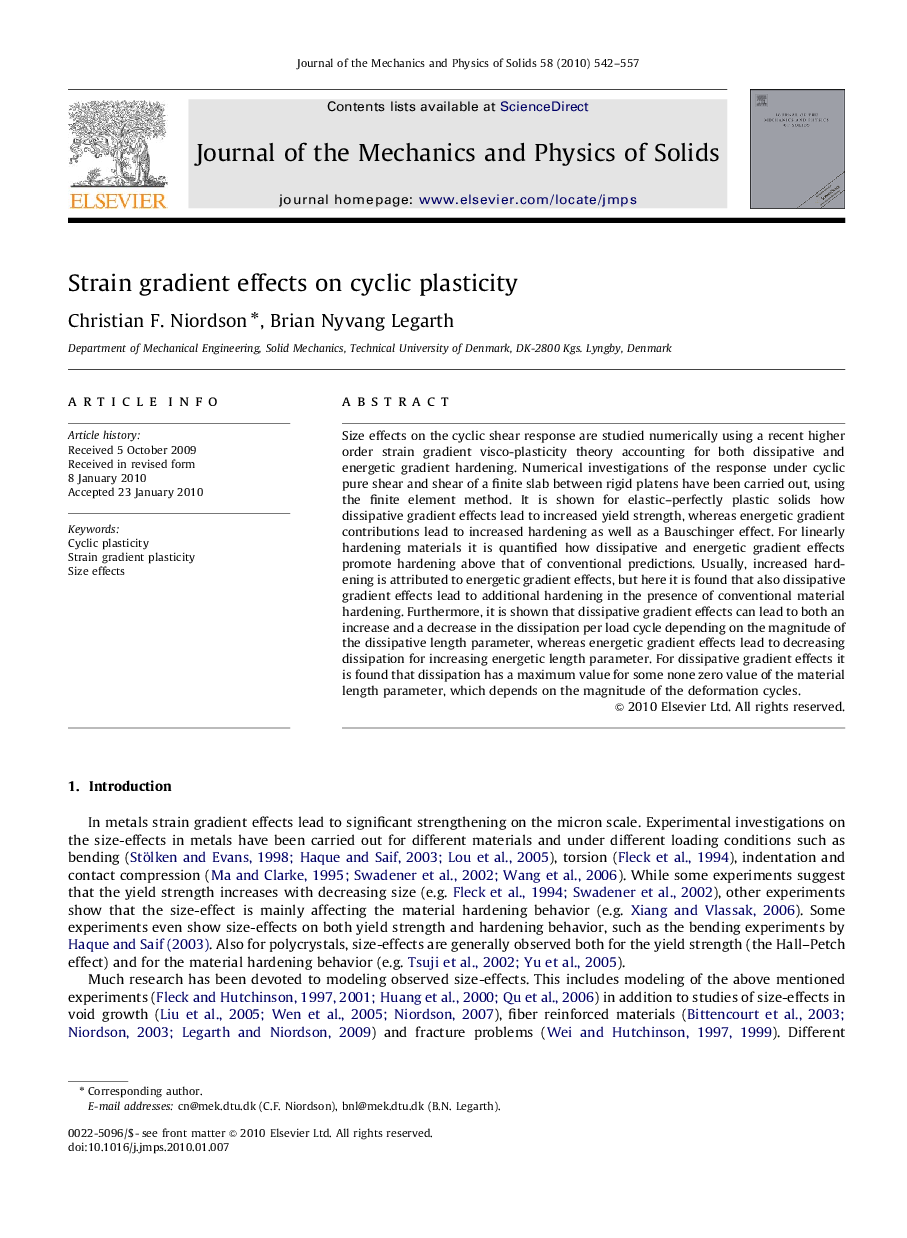| Article ID | Journal | Published Year | Pages | File Type |
|---|---|---|---|---|
| 793616 | Journal of the Mechanics and Physics of Solids | 2010 | 16 Pages |
Size effects on the cyclic shear response are studied numerically using a recent higher order strain gradient visco-plasticity theory accounting for both dissipative and energetic gradient hardening. Numerical investigations of the response under cyclic pure shear and shear of a finite slab between rigid platens have been carried out, using the finite element method. It is shown for elastic–perfectly plastic solids how dissipative gradient effects lead to increased yield strength, whereas energetic gradient contributions lead to increased hardening as well as a Bauschinger effect. For linearly hardening materials it is quantified how dissipative and energetic gradient effects promote hardening above that of conventional predictions. Usually, increased hardening is attributed to energetic gradient effects, but here it is found that also dissipative gradient effects lead to additional hardening in the presence of conventional material hardening. Furthermore, it is shown that dissipative gradient effects can lead to both an increase and a decrease in the dissipation per load cycle depending on the magnitude of the dissipative length parameter, whereas energetic gradient effects lead to decreasing dissipation for increasing energetic length parameter. For dissipative gradient effects it is found that dissipation has a maximum value for some none zero value of the material length parameter, which depends on the magnitude of the deformation cycles.
